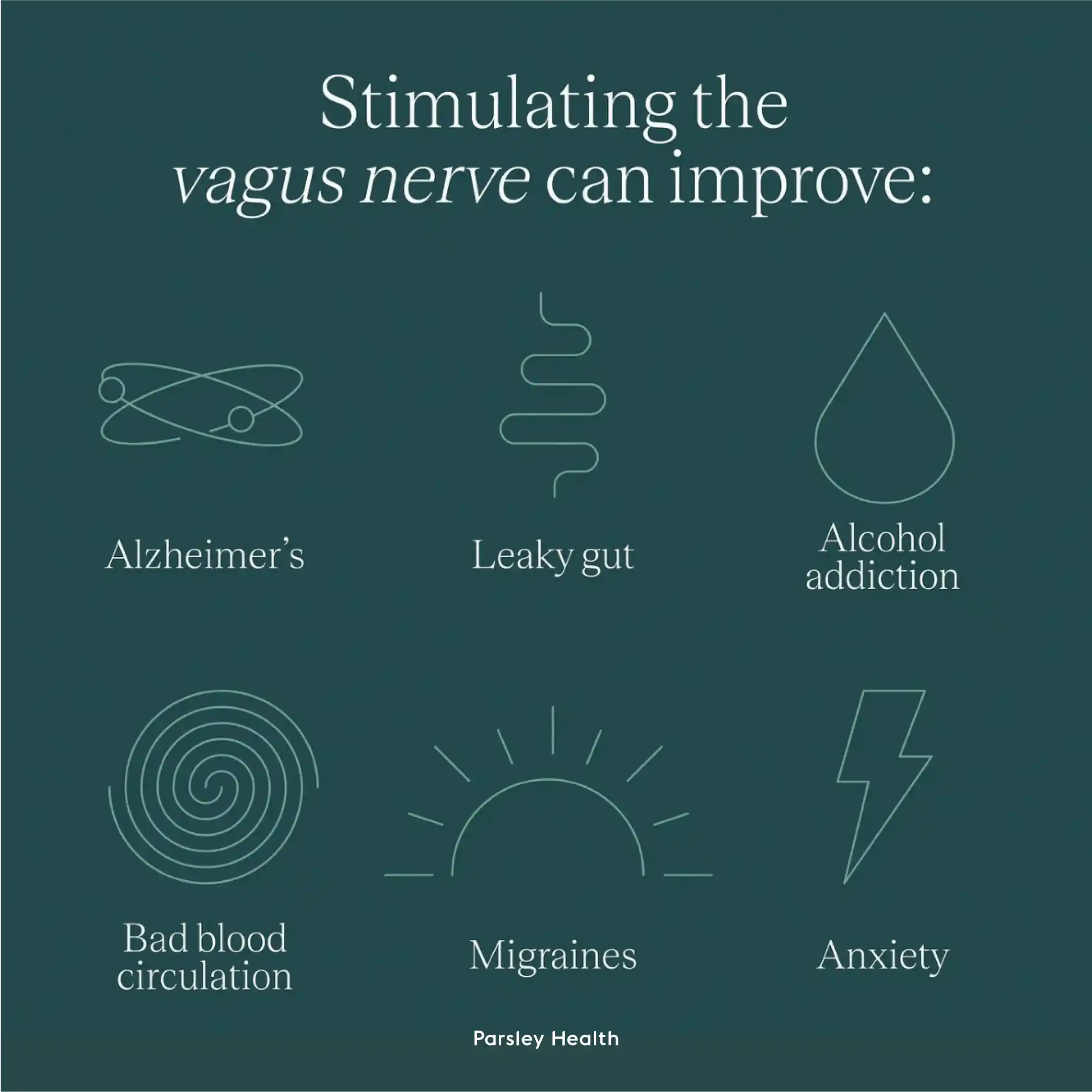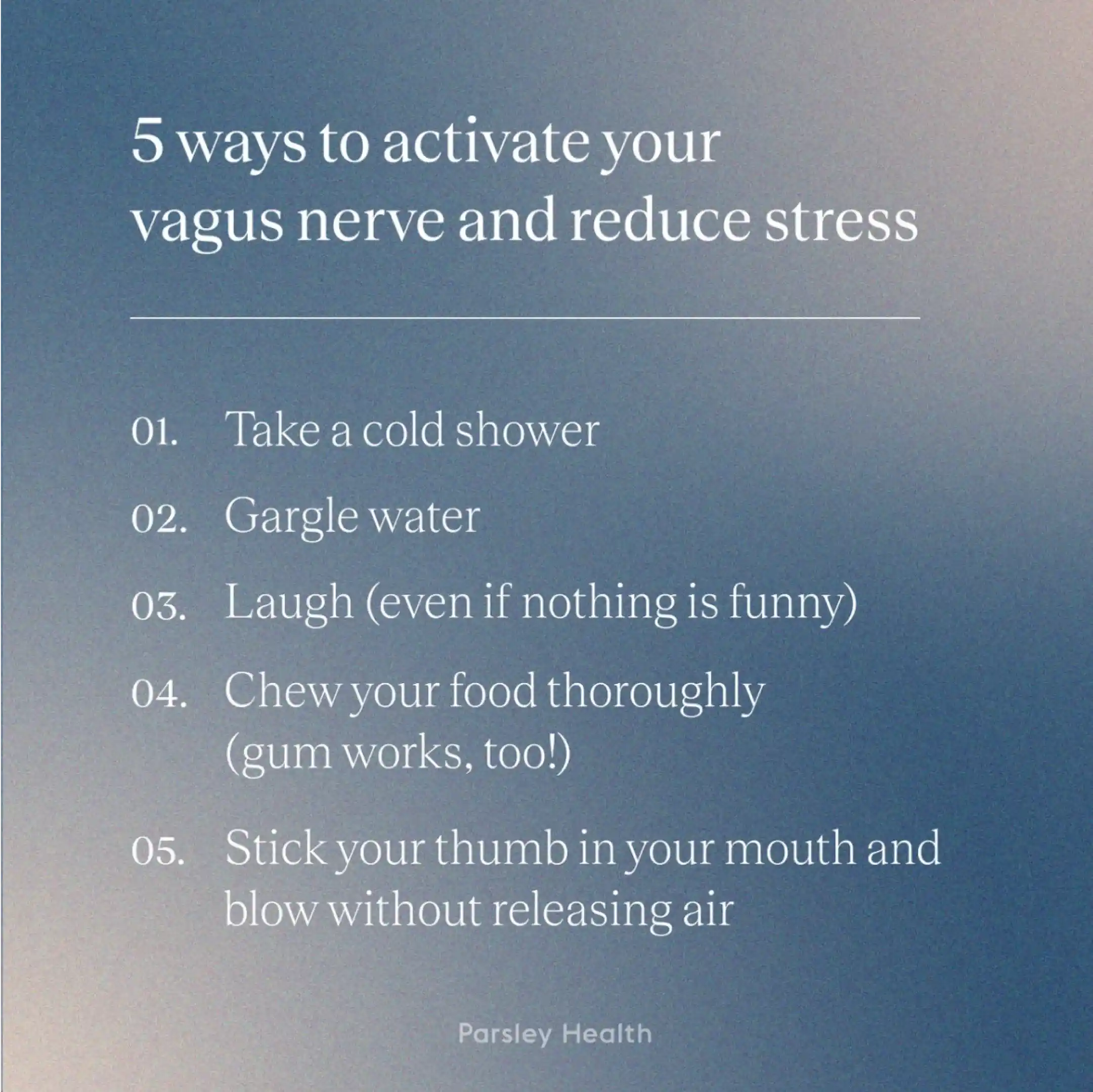This article was medically reviewed by Nisha Chellam, MD. It contains additional reporting by Angela Myers.
Did you know you actually have a chill-out button in your back pocket? It’s called the vagus nerve. (And, yes, vagus nerve exercises are a thing.)
“The vagus nerve connects the brain to the body, and its primary function is to activate our parasympathetic nervous system (PNS),” says Erin D’Elia Assenza, a certified health coach at Parsley Health. There are two branches of the autonomic nervous system or peripheral nervous system (PNS), or “rest and digest” and sympathetic nervous system (SNS), or “fight and flight.”
Of course, it’s not literally located in your back pocket—the vagus nerve runs from the brainstem through the neck and down to your abdomen. Its main function is to regulate digestion and your heart and breathing rate. When it’s activated, it will temper your physiological stress response, allowing a feeling of calm to wash over you. And the good news? There are specific exercises you can do for vagus nerve stimulation. At Parsley Health, we often help women connect these kinds of practices to the bigger picture of stress and hormone health, weaving them into care that looks at the whole person.








